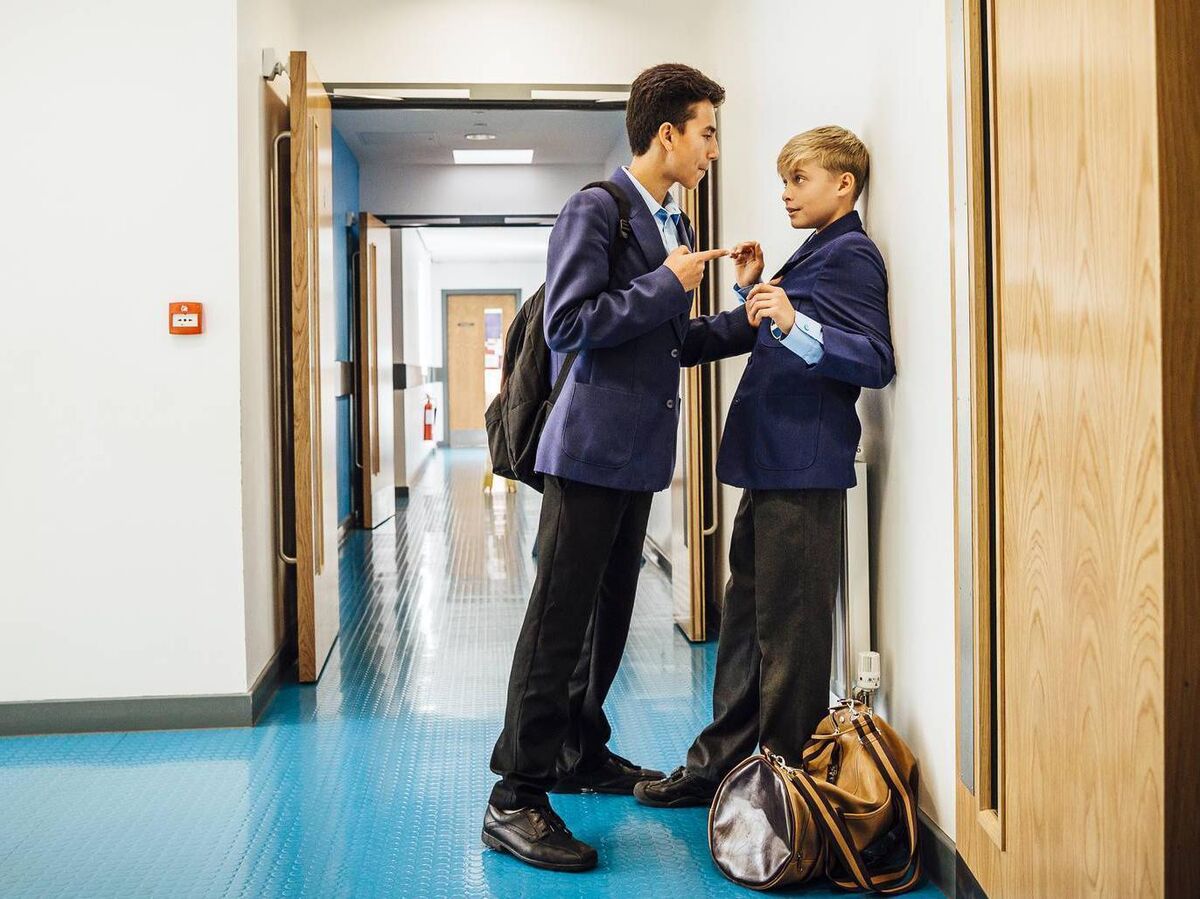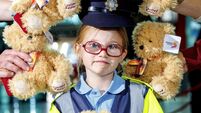Colman Noctor: Why many young people do not recognise they have been bullied

The term ‘bullying’ still carries a heavy stigma. To admit that you are a victim of bullying seems to be a form of harassment that few children want to own
"But it’s not bullying” is one of the most common sentences I hear in my therapy room.
Usually said after a young person has just told me a disturbing account of how their peers have treated them.
That clarification is important to them because they don’t want me to interpret what they have said to me as bullying.
The term ‘bullying’ still carries a heavy stigma. To admit that you are a victim of bullying seems to be a form of harassment that few children want to own.
This, unfortunately, means they are less likely to discuss what they are enduring, fearing the consequences that disclosure will bring.
We have just started a new school term, so the newly published ESRI research is timely.
The research, carried out in partnership with the Department of Children, Disability and Equality (DCDE) and based on the Growing Up in Ireland study, makes for sobering reading.
It shows that, while bullying remains a widespread experience for children, many choose not to tell an adult. It’s particularly likely to happen with 13-year-olds, with one in four of them staying silent.
As a child psychotherapist, I am often struck by how children interpret their own experiences of bullying.
Adults tend to view it as a clear-cut event, like someone being pushed in the playground or someone taking your lunch money.
However, to young people today, bullying often exists in a much greyer area.
For example, it can be the hurt of being excluded from a group chat. It may seem minor to the adults from the outside, but it can feel enormous when you’re 13.
The ESRI report highlights something I have seen in my therapeutic work: the way we inquire about bullying influences young people’s responses.
When the 13-year-olds in the study were asked a question explicitly using the word “bullying”, only 8% said they had been bullied in the past three months.
However, when the question was reformulated to list behaviours such as being hit, excluded, or called names, 62% said they had experienced at least one of these in the same period, and 37% said it occurred repeatedly.
This significant gap indicates that many young people do not always recognise they have been bullied even though they feel its full impact.
It suggests that such behaviour is now so common they see it as ‘the way things are’ or believe that admitting they are a victim of bullying could make them seem weak.
Age can make a difference. While adolescents may not want to speak up for fear of being isolated by their tribe, younger primary school children may be more likely to report overt bullying behaviour.
The ESRI research also confirms what many of us instinctively know: young people who have a disability, identify as lesbian, gay or bisexual, and those who are overweight are more likely to be targeted.
But the kind of bullying they experience is telling. It is less about physical violence and more about the social cruelties, like exclusion, ridicule, and nasty comments.
For girls, this often manifests as being deliberately excluded from Snapchat groups or seeing hurtful comments about them online.
These actions are usually so subtle that it can be complicated to identify them as bullying behaviours, and they are equally difficult to challenge or manage.
But that shouldn’t mean we stop trying to address bullying in all its forms.
The pain of physical injury often fades faster than the pain of social exclusion. A bruise will heal; however, the memory of standing in a circle of friends who suddenly turn their backs on you can affect a child for years to come.
Perhaps the most disturbing finding in the ESRI study is that so many children remain silent about these subtle yet damaging behaviours.
Although 70% of young people who describe their experience as “bullying” will confide in a parent, teacher, or another adult, the percentage drops to 42% when the behaviour is described without the label.
Why is this? The study findings suggest children are more likely to report when the harm is clearer, when it appears as ‘real bullying’, and when the evidence is visible.
However, when it comes to exclusion, sly remarks, or being ignored — all quieter forms of bullying, children often do not tell.
In my therapeutic work, I will hear young people say: “I didn’t want to make a big deal of it”; “it’s not really bullying, it’s just how people are”; “it happens to everyone”, and “if I told, it would only make things worse.”

That last sentence is particularly concerning as it highlights that the adult world doesn’t always feel like a safe place for young people to bring these worries.
Unfortunately, I have numerous examples of young people who did raise their concerns to an adult, and the response was that the teacher would ‘have a word with the class’, but nothing changed. In some cases, things only got worse.
One of the most significant findings from the Growing Up in Ireland data is the connection between early experiences and later outcomes.
Children picked on at age nine are more likely to face bullying again at 13. And those repeated experiences carry heavy consequences.
By early adolescence, the research shows, these young people have poorer wellbeing and higher depression scores.
The effect is even more powerful when bullying is consistent, from the same person, or involves being socially excluded.
The ‘power’ of bullying often comes from its predictability, source, and social impact.
Consistency matters because a one-off cruel comment can hurt, but when it’s persistent, it creates ongoing stress and anxiety.
Who the aggressor is matters too as if it’s the same person, the victim may feel trapped in a power imbalance, especially if the bully has social influence or authority.
Exclusion creates lasting harm, isolating the victim from potential sources of support, making them feel alone and powerless.
While it can be challenging to manage the situation where a child is repeatedly bullied in different settings, there is no excuse for it continuing when the perpetrator is the same person in a school setting.
Managing bullying is problematic everywhere. A notable example of the most effective measures taken to address bullying is Finland.
Its KiVa programme is a national initiative designed to curb bullying through whole-school culture shifts, teacher protocols, and bystander empowerment.
Strong data backs Finland’s adoption, and it has been replicated in Britain, Chile, the Netherlands, and Italy.
The ESRI recognises that addressing culture is key to managing the bullying problem in Irish schools.
The ESRI study findings suggest, as parents and teachers, we need to:
- Instead of “are you being bullied?”, try “has anyone been mean to you?” or “do you ever feel left out at school?”. These open questions help children share without having to categorise their experience;
- Children who believe that sadness, anger, and upset are acceptable emotions are more likely to express them. If we only promote ‘positive thinking’, they may learn to conceal the painful feelings;
- Even if what they describe seems minor to you, resist the urge to say “that’s just part of growing up”. To your child, it might feel huge. The quickest way to shut down a conversation is to make them feel silly for raising it;
- Not all bullying leaves marks. Changes in mood, withdrawal, or reluctance to go to school, may also be indicators of something going on for your child.
While parents play a key role, bullying isn’t something families should handle alone. Schools, peer groups, and communities, all influence how bullying is defined and addressed.
The fact that many young people don’t recognise exclusion as bullying highlights how much we need to expand the conversation.
School leaders and teachers often ask me how they can foster environments where students feel safe to speak out.
My advice remains the same: it’s less about having the perfect ‘anti-bullying policy’ on paper and more about the culture children experience daily.
Do students feel heard? Do they see adults taking concerns seriously? Do they know that cruelty will be challenged, not ignored?
The ESRI’s findings are both sobering and instructive. They remind us that bullying is not always a dramatic confrontation in the schoolyard.
More often, it’s the subtle exclusions, the whispered comments, the Snapchat messages that vanish but leave their sting behind.
For parents, the challenge is to notice what is often invisible and to invite their children to share the feelings they might otherwise keep hidden.
We may not be able to prevent every cruel word or unkind act, but by building trust, asking the right questions, and taking their experiences seriously, we can make sure our children never feel alone in carrying them.
Remember, bullying does its worst damage when it remains silent. It is only when we can persistently , gently, and compassionately break that silence that healing can begin.
- Dr Colman Noctor is a child psychotherapist









